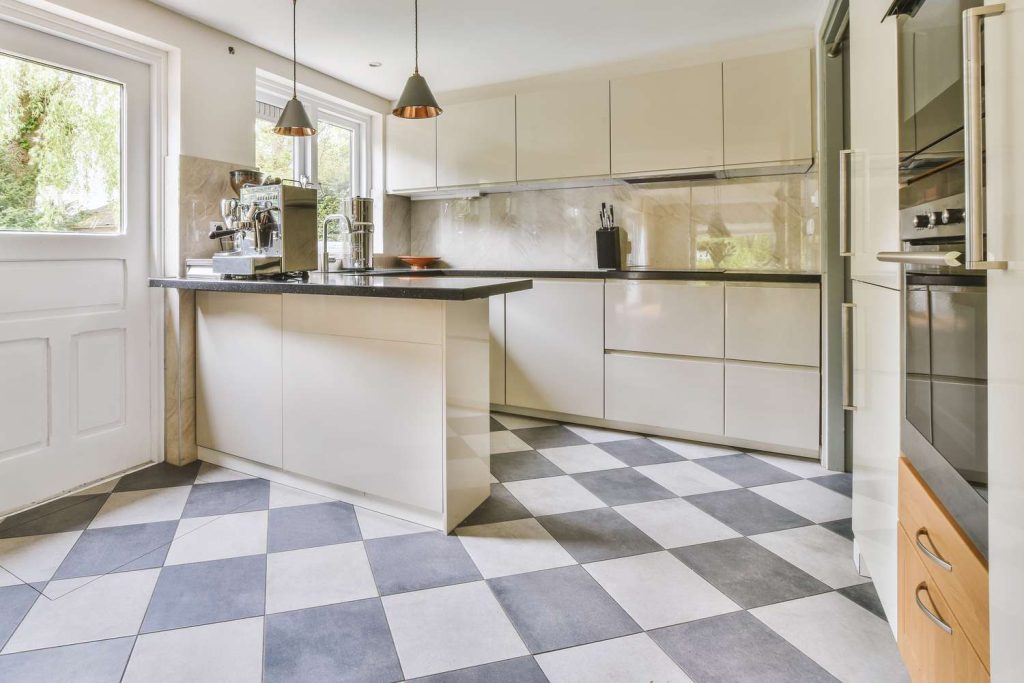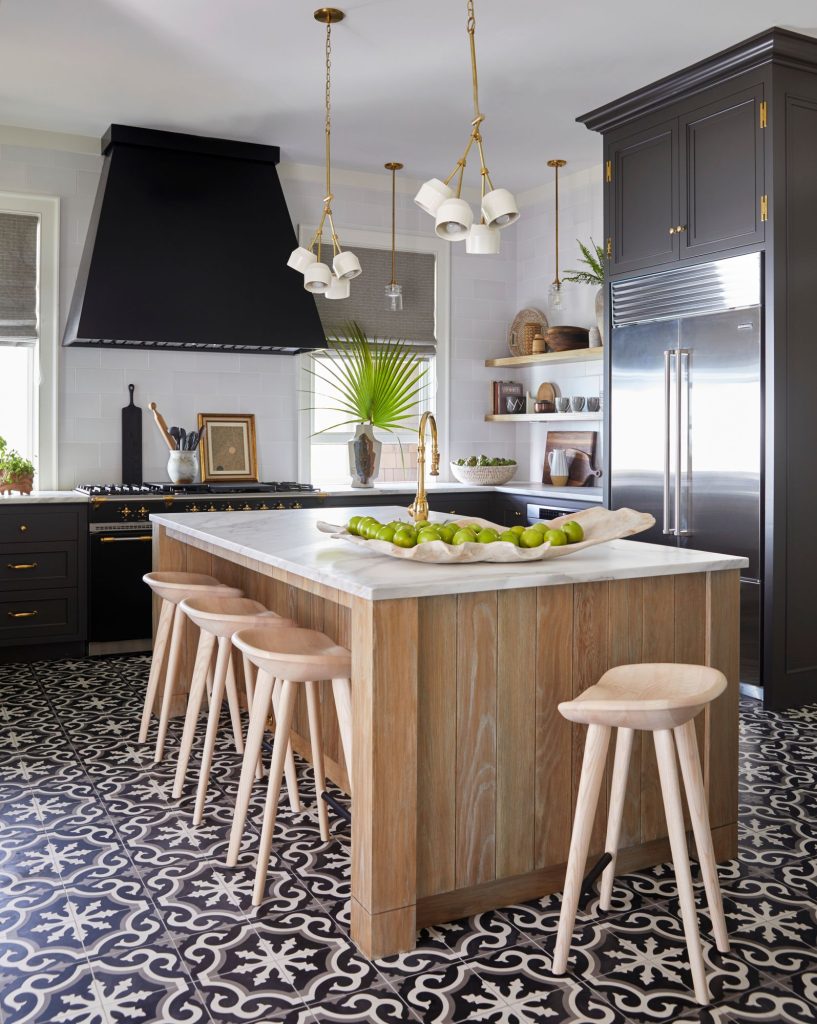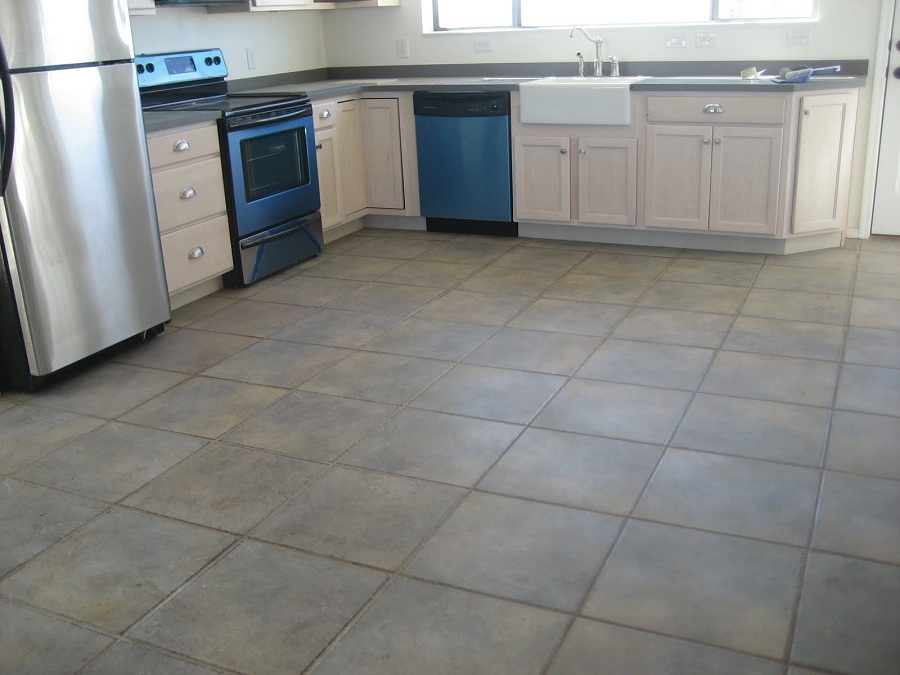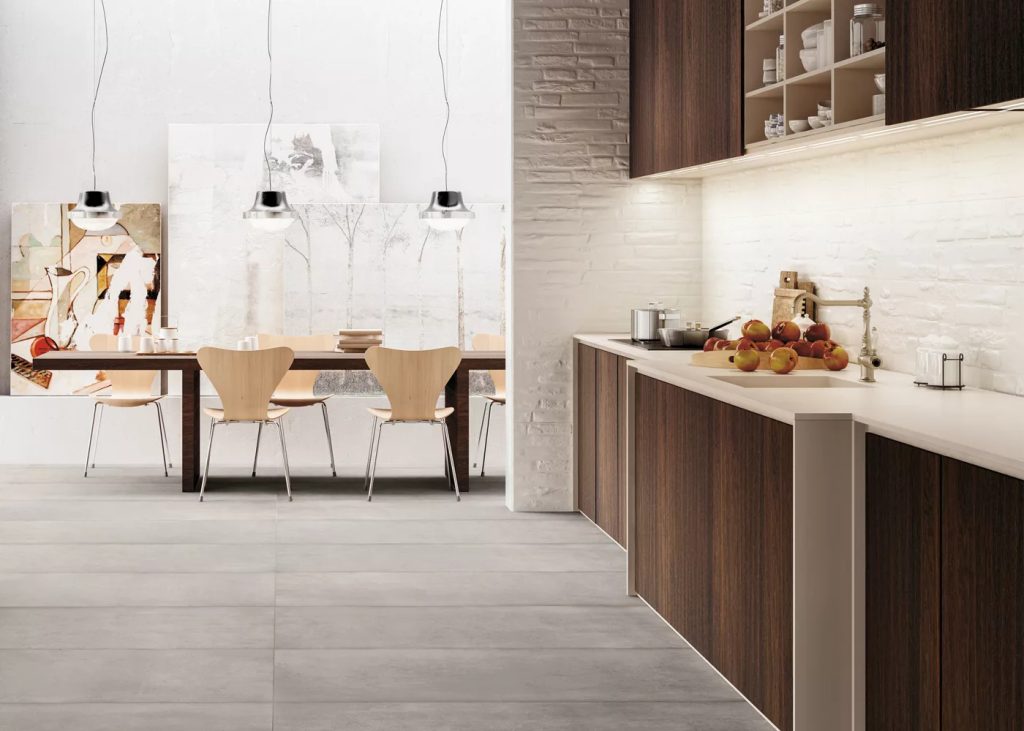Ceramic tiles for kitchen, choosing the right ceramic tiles for your kitchen is an important decision as it can significantly impact the overall look, feel, and functionality of the space. In this comprehensive guide, we will discuss various factors to consider when selecting ceramic tiles for your kitchen, including types of ceramic tiles, sizes, colors, finishes, patterns, durability, maintenance, and installation. Let’s delve into a detailed examination of each aspect to help you make an informed choice for your kitchen renovation or upgrade.

Introduction to Ceramic Tiles for Kitchen
Ceramic tiles are a popular choice for kitchen flooring, backsplashes, countertops, and walls due to their durability, versatility, and aesthetic appeal. Available in a wide range of colors, patterns, and finishes, ceramic tiles offer endless design possibilities to suit different kitchen styles and preferences. Before making a selection, it’s essential to understand the key factors that can influence your decision and ensure that the chosen tiles meet your practical and aesthetic requirements.
Factors to Consider When Choosing Ceramic Tiles for Kitchen
-
Types of Ceramic Tiles:
- Porcelain Tiles: Known for their strength and water resistance, porcelain tiles are an ideal choice for high-traffic areas like the kitchen. They are durable, easy to clean, and available in a variety of designs, including wood-look and stone-look options.
- Glazed Ceramic Tiles: These tiles have a protective glaze coating that adds color and shine. They are suitable for kitchen walls and backsplashes but may not be as durable as porcelain tiles.
- Unglazed Ceramic Tiles: Unglazed tiles have a natural, matte finish and are more slip-resistant than glazed tiles. They are commonly used for kitchen floors but require sealing to prevent stains.
-
Sizes and Shapes:
- Standard Sizes: Common sizes for kitchen floor tiles include 12×12 inches, 18×18 inches, and 24×24 inches. For walls and backsplashes, subway tiles (3×6 inches) and larger formats like 12×24 inches are popular choices.
- Shapes: In addition to square tiles, consider rectangular tiles, hexagonal tiles, or mosaic tiles for adding visual interest and creating unique patterns in your kitchen.

-
Colors and Finishes:
- Neutral Tones: Neutral colors like white, beige, gray, and taupe are versatile options that can complement various kitchen styles and color schemes. They create a timeless look and provide a neutral backdrop for other design elements.
- Bold Colors: If you want to make a statement, consider using bold or vibrant colored tiles as accent pieces or focal points in your kitchen. Incorporate colors that reflect your personality and add a pop of excitement to the space.
- Finishes: Choose from matte, glossy, textured, or polished finishes based on your preference and the desired aesthetic. Matte finishes offer a more subtle look, while glossy finishes reflect light and create a sleek appearance.
-
Patterns and Designs:
- Subway Tiles: Classic subway tiles are a popular choice for kitchen backsplashes due to their timeless appeal and versatility. Consider arranging them in a traditional brick pattern or herringbone layout for a modern twist.
- Geometric Patterns: Hexagonal tiles, chevron patterns, and geometric designs can add visual interest and contemporary flair to your kitchen. Experiment with different layouts to create a unique and dynamic look.
- Mosaic Tiles: Mosaic tiles come in various materials, colors, and sizes, allowing you to create intricate patterns, borders, or decorative accents in your kitchen. Mix and match mosaic tiles to personalize your space and showcase your creativity.

-
Durability and Maintenance:
- Scratch Resistance: Choose ceramic tiles that are scratch-resistant and can withstand heavy foot traffic, spills, and everyday wear and tear in the kitchen. Porcelain tiles are known for their durability and long-lasting performance.
- Stain Resistance: Opt for tiles that are easy to clean and maintain, especially in high-use areas like the kitchen. Ensure that the tiles have a protective sealant or coating to repel stains and spills effectively.
- Slip Resistance: For kitchen floors, prioritize slip-resistant tiles to enhance safety and prevent accidents. Look for tiles with textured surfaces or slip-resistant ratings to provide traction in wet conditions.
-
Installation and Layout:
- Tile Layout: Consider the layout and arrangement of tiles to create a cohesive and visually appealing design in your kitchen. Explore different patterns like running bond, checkerboard, or diagonal layouts to enhance the aesthetic impact.
- Grout Color: Select a grout color that complements the tiles and enhances the overall look of the installation. Light-colored grout can create a seamless appearance, while dark grout can add contrast and definition to the design.
-
Budget and Cost Considerations:
- Price Range: Ceramic tiles come in a wide price range depending on the quality, size, design, and brand. Set a budget for your kitchen renovation project and explore options that offer the best value for your investment.
- Cost of Installation: Factor in the cost of professional installation when budgeting for ceramic tiles in your kitchen. Obtain quotes from reputable contractors and ensure that the installation process meets industry standards for quality workmanship.
-
Environmental Impact:
- Sustainable Materials: Consider choosing ceramic tiles made from recycled materials or produced using environmentally friendly manufacturing processes. Look for certifications like LEED certification or Green Squared certification to verify the sustainability of the tiles.
- Energy Efficiency: Ceramic tiles have thermal properties that can help regulate indoor temperatures and reduce energy consumption. By selecting tiles with good insulation properties, you can contribute to a more energy-efficient kitchen environment.

-
Personal Style and Preferences:
- Reflect Your Style: Your choice of ceramic tiles should align with your personal style, whether it’s modern, traditional, eclectic, minimalist, or rustic. Select tiles that resonate with your design preferences and enhance the overall aesthetic of your kitchen.
- Create Cohesion: Ensure that the selected tiles harmonize with the existing decor, cabinetry, countertops, and appliances in your kitchen. Aim for a cohesive look that ties together different elements and creates a unified design scheme.
-
Seeking Professional Advice:
- Consultation: If you’re unsure about which ceramic tiles to choose for your kitchen, consider seeking advice from interior designers, tile experts, or home renovation professionals. They can provide insights, recommendations, and guidance based on your specific needs and preferences.
By carefully considering these factors and exploring the diverse options available, you can select the perfect ceramic tiles for your kitchen that not only enhance the aesthetic appeal but also meet your practical requirements for durability, functionality, and maintenance. Remember to take your time, compare different styles, and envision how the chosen tiles will transform your kitchen into a stylish and inviting space that reflects your unique taste and lifestyle.
